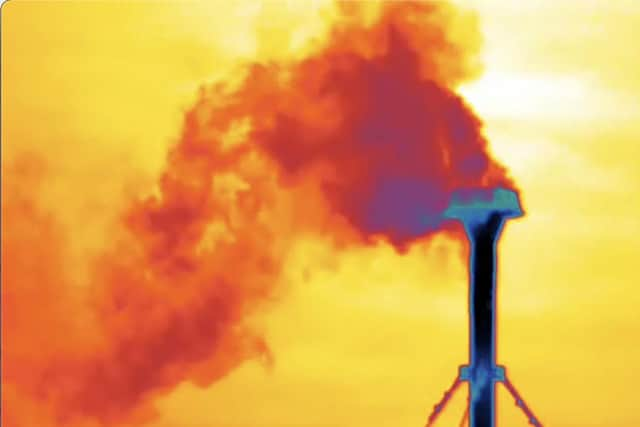COP26: UK oil and gas facilities found to be 'super emitters' of methane
Climate advocacy group Clean Air Task Force (CATF) said it found some of the largest methane emission events the group has ever witnessed in Europe after visiting more than 200 sites in 12 countries.
The campaign organisation used a methane gas analyser to confirm the presence of high concentrations of methane at some locations and warned some UK sites could be “super emitters”. Methane is the main component of fossil gas and accounts for a quarter of today’s warming.
Advertisement
Hide AdAdvertisement
Hide AdThe report comes as the UK prepares play a critical role in advancing commitments to methane emissions reduction as president and host nation of COP26, which is due to be held in Glasgow in just over a week.


CATF visited a total of seven National Grid gas compressor stations out of a total of 25 nationwide, finding methane emissions at six of the seven stations.
The group also found significant emissions of methane and other toxic gases from 13 of 17 onshore oil wells it visited, with at least ten of these often using highly polluting cold venting techniques.
The organisation said it had recorded “significant plumes” at iGas Energy Larkwhistle Farm oil well, iGas Energy Glentworth 1 oil well, iGas Energy Horndean X and iGas Energy Beckingham 1, as well as “significant venting” from the Perenco Kimmeridge Oil Well on the Jurassic Coast. The Kimmeridge site is the oldest continuously producing oil well in the UK.
Jonathan Banks, international director of super pollutants at CATF, said: “The UK has an opportunity to become a world leader in cutting methane pollution. They have helped spearhead the Global Methane Pledge at COP26 and are making the right noises on tackling the biggest low-hanging fruit in climate policy.
"But these images show that promises must be turned into action as soon as possible. True climate leadership is achieved by actions, not words.”
James Turitto – super pollutants campaign manager at CATF, said: “Considering that cutting methane pollution is our best bet to avoid significant warming in the next 20 years, it's spectacular how much natural gas is being released into the atmosphere. In the middle of a gas crisis, it shows these companies have little regard for either the cost to the climate or costs to British citizens."
A spokeswoman for the UK Government’s Environment Agency said: “We take the environmental risks associated with onshore oil and gas sites very seriously. Oil and gas operators must meet the highest environmental standards which are set out in law.
Advertisement
Hide AdAdvertisement
Hide Ad“Our regulatory controls are in place to protect people and the environment. If the activity poses an unacceptable risk to the environment, the activity will not be permitted.”
Environmental permits require oil and gas operators to minimise emissions to the environment. It is understood that audits of the sites have not identified any major permit non compliance.
The Environment Agency on Friday published a study on approaches to quantifying whole site methane emissions on onshore oil and gas sites.
A message from the Editor:
Thank you for reading this article. We're more reliant on your support than ever as the shift in consumer habits brought about by Coronavirus impacts our advertisers.
If you haven't already, please consider supporting our trusted, fact-checked journalism by taking out a digital subscription.
Comments
Want to join the conversation? Please or to comment on this article.
